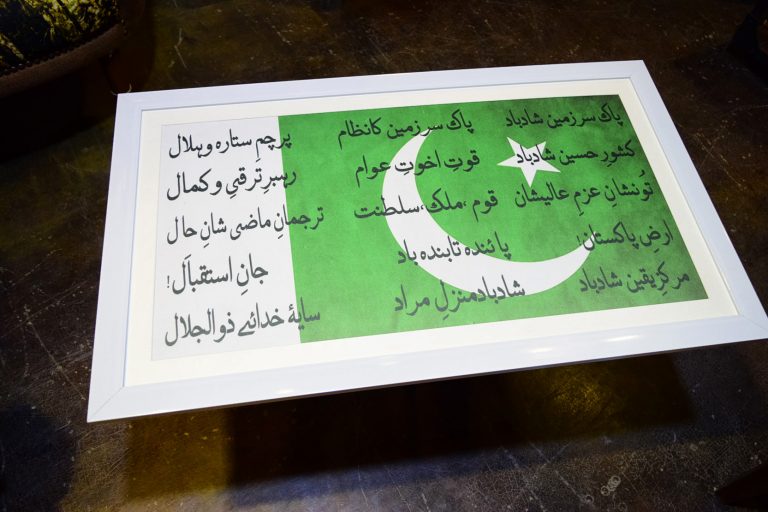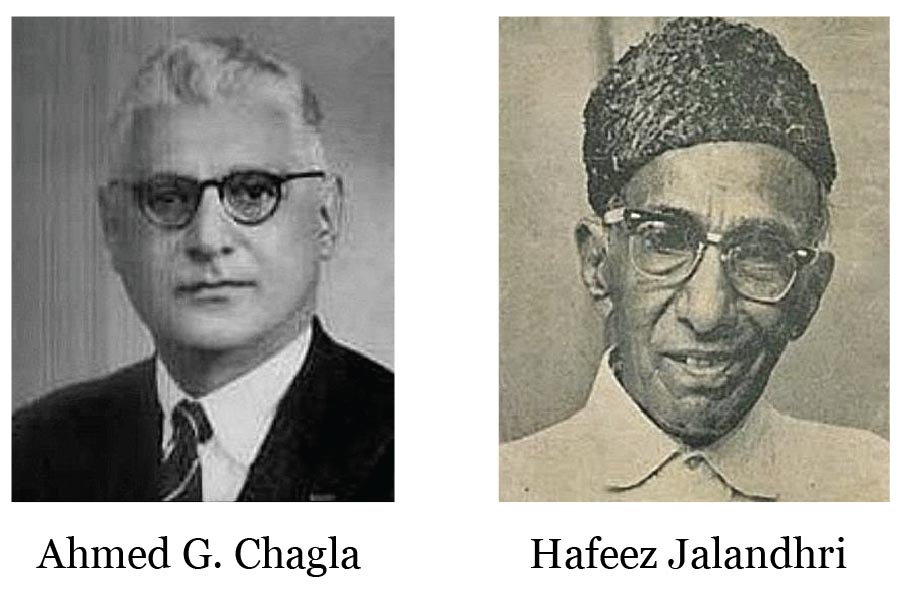
Only the tune of anthem was played at the time of visit of Indonesian President Sukarno and Shah of Iran in 1949 and 1950 respectively.
A total of 732 people had submitted lyrics for the anthem between 1952 and 1954.
Sindh Courier Monitoring Desk
Pakistan came into being in August 1947 but the new country had no national anthem for about seven years. More interestingly, the tune of the national anthem was composed first, and the lyrics were written many years later.
When the Indonesian President Sukarno and Shah of Iran visited Pakistan in 1949 and 1950 respectively, only the tune of anthem was played by the Naval band while an American band played the tune during then Prime Minister Liaquat Ali Khan’s visit to United States the same year.
This has been revealed by a columnist Nadeem Paracha in his write up published in ‘Hilal’, a magazine of Pakistan’s Armed Forces.
The article says, “A 1969 publication called ‘Focus on Pakistan’ (University of Michigan) informs that in early 1948 a South Asian Muslim residing in South Africa penned a letter to the government of Pakistan and offered to award Rs.5000 each to the composer and lyricist of Pakistan’s national anthem. In terms of monetary value, Rs.5000 meant a lot more in those days.”
The government announced this offer through newspaper ads. Then as lyrics and compositions began to pour in, the government formed a National Anthem Committee (NAC) which was to select the best words and music for the final anthem.
 But it wasn’t till a year later in October 1949 that the NAC finally picked a winner. His name was Ahmed G. Chagla, a sophisticated 48-year-old music composer and theosophical scholar. In fact, due to his expertise in both eastern and western forms of classical music, Chagla had been added as a member of the NAC. When the Committee didn’t like the many compositions submitted by various people, it asked Chagla to compose a tune.
But it wasn’t till a year later in October 1949 that the NAC finally picked a winner. His name was Ahmed G. Chagla, a sophisticated 48-year-old music composer and theosophical scholar. In fact, due to his expertise in both eastern and western forms of classical music, Chagla had been added as a member of the NAC. When the Committee didn’t like the many compositions submitted by various people, it asked Chagla to compose a tune.
“Another reason why Chagla was given the task was because the government had nothing to play as an anthem during the visit of the first major foreign dignitary to Pakistan; the Indonesian President Sukarno,” columnist says.
Chagla composed the tune keeping in mind the instruments used in military bands. But drawing from his experience and knowledge of western symphonic and eastern classical music, Chagla’s composition managed to add rich melodious dimensions, giving the tune a rather reflective disposition.
Yet, the NAC failed to select any of the submitted words for the anthem. So Chagla’s tune was played by a Pakistan naval band without any words during President Sukarno’s 1949 visit and then again during the visit of the Shah of Iran in 1950. It was also played (by a U.S. military band) during Prime Minister Liaquat Ali Khan’s visit to the U.S. the same year.
In late 1951, the NAC began to distribute vinyl recordings of Chagla’s tune to various Urdu poets so they could come up with words most suited to the musical dynamics and mood of the composition.
One such poet was Hafeez Jalandhri. Interestingly, another Urdu poet, Saghar Siddique, too submitted some lyrics for the anthem, but they were not used. Siddique would go on to become a famous poet, albeit a rather tragic one. A total of 732 people had submitted lyrics for the anthem between 1952 and 1954.
In 1952 the NAC finally selected the words for the anthem. They were by Hafeez Jalandhri, but it took another two years for the government to give the green signal for the words to be set to Chagla’s music. It was in August 1954 that these words were sung for the first time.
Unfortunately, the composer of the anthem, Chagla, had passed away in 1953, so he was never able to hear his tune with Jalandhri’s words.
The lyrics by Jalandhri were influenced by classical Persian vocabulary. But since Urdu borrows heavily from Persian, Jalandhri composed and arranged them in such a manner that the anthem can easily be understood by anyone fluent in Urdu and Persian. But why use Persian expressions and vocabulary?
“There are hardly any answers to this question because when the words were approved in 1952 and then set to Chagla’s music in 1954, no one asked why they were in Persian. Observers believe that Persian influence that had been be so instrumental in shaping the culture of Muslim rule in India (from the 13th till 19th century CE) was still rather strong among the Muslims of the region during the birth of Pakistan in 1947,” he writes.
“Secondly, even till the early 1950s, less than 10 percent Pakistanis spoke Urdu. So as to not undermine the sentiments of those who spoke different languages in the new country, Jalandhri used the Persian language in such a manner that it gave the anthem a more universal and pluralistic flair which was not related to a single ethnic community or group.”
And even though the anthem indeed was linked to Pakistan’s Muslim majoritarianism, yet, as Raja A. Saleem notes in his book, Jalandhri used religious imagery in the tradition of Muslim Mughal culture in the region. Thus the words such as Khuda, yaqeen, awam, etc., in it (instead of the overtly Arabized imagery in this context which became much in vogue ever since the 1980s). Also, Jalandhri was an admirer of the powerful poet and philosopher, Muhammad Iqbal, who had written most of his passionate poems in Persian.
The first film to show a Pakistani flag fluttering to the score and words of the national anthem was made in early 1955 and shown at cinemas in Karachi and Lahore. It was a black and white film with a running time of 1 minute 20 seconds. The first colour film of this nature was produced in late 1955 in the United States. Both began being played at cinemas just before the main films from 1957 onwards.
_____________________
Courtesy: Hilal